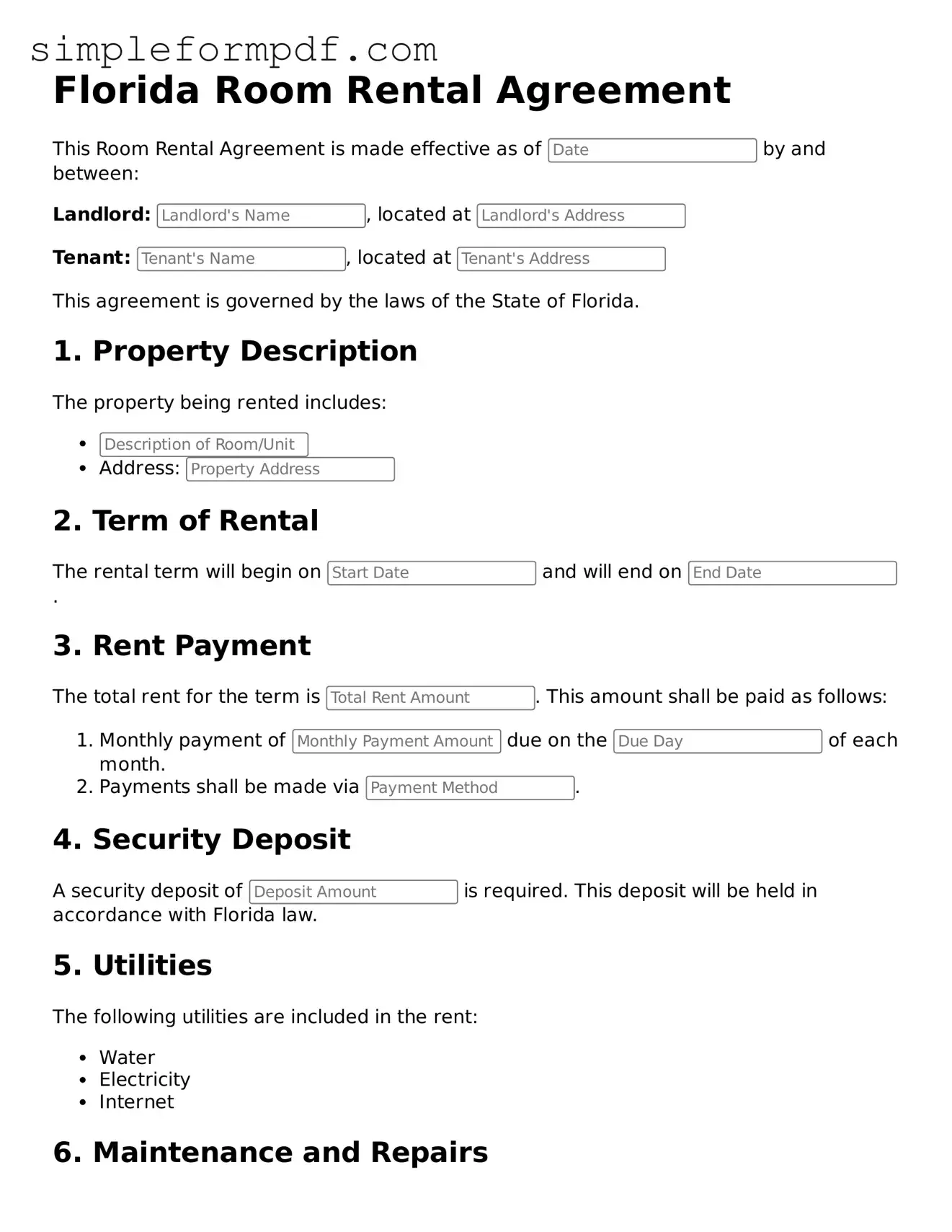Free Room Rental Agreement Form for the State of Florida
The Florida Room Rental Agreement form is a legal document that outlines the terms and conditions between a landlord and a tenant for renting a room in Florida. This agreement is essential for protecting the rights of both parties and ensuring a clear understanding of responsibilities. To secure your rental arrangement, fill out the form by clicking the button below.
Launch Editor
